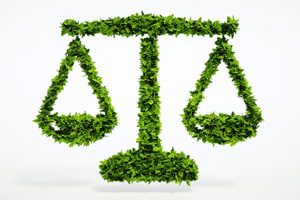
Content approved by Jerry Parker Environmental law is a broad category of laws and regulations designed to address environmental concerns such as how human beings interact with the environment, natural resource management, and pollution. It is a relatively new branch of law in American History as the first regulations didn’t come into effect until the […]
Content approved by Jerry Parker
 Environmental law is a broad category of laws and regulations designed to address environmental concerns such as how human beings interact with the environment, natural resource management, and pollution. It is a relatively new branch of law in American History as the first regulations didn’t come into effect until the 1960s, but now has progressed to the point that it covers a large spectrum of regulations that include air quality, water quality, toxic substances, endangered species and more. Environmental lawyers have an input in laws that range from local to national because they are so involved in hundreds of different types of day-to-day transactions and agreements.
Environmental law is a broad category of laws and regulations designed to address environmental concerns such as how human beings interact with the environment, natural resource management, and pollution. It is a relatively new branch of law in American History as the first regulations didn’t come into effect until the 1960s, but now has progressed to the point that it covers a large spectrum of regulations that include air quality, water quality, toxic substances, endangered species and more. Environmental lawyers have an input in laws that range from local to national because they are so involved in hundreds of different types of day-to-day transactions and agreements.
It is thanks to the creation of environmental law that the United States has the Environmental Protection Agency. The EPA helps enact new laws written by Congress to regulate natural resources and protect human health as well as environmental health.
The Clean Air act regulates air emissions and toxic pollutants in the air that could present a hazard to public health and welfare.
Back in the 1970s when the law was created, the goal was to achieve a healthy air quality standard throughout all the states by 1975. This was done to address health and welfare risks posed to the public due to widespread pollution in the air. Setting these standards for pollution control was done by implementing plans that varied for each state and area depending on the industrial sources of pollution in each location.
This act was amended in 1977 and 1990 in order to set new goals for achieving new air quality standards due to different areas in the country failing to meet the agreed upon deadline. The most recent amendment of the Clean Air Act also updated the parts of it that addresses air pollutants and emissions to include technology-based “major sources” standards in certain areas. In this case, “major sources” means a stationary source that has the potential to emit over 10 tons of air pollution each year.
Like the Clean Air Act, the Clean Water Act regulates discharge of pollutants and water quality in the United States. In 1972, the act was reorganized and expanded from several older variations to help keep waterways clean from pollution by setting wastewater standards for industries.
Under the Clean Water Act, it is illegal to discharge pollution into water sources people can easily access unless one were to obtain a permit. The permit program controls how much pollution can be discharged. Unlike individual homes or point sources which are connected to a septic system and often don’t have much discharge, industrial, larger municipal sources, and large facilities must obtain a permit if their discharges directly lead into surface waters.
The Endangered Species Act is a program designed for the conservation of threatened or endangered plants, animals, and habitats. It also monitors import, export, interstate, and foreign commerce of endangered or prohibited species. This law is led by federal agencies like the U.S. Fish and Wildlife Service in the U.S. National Oceanic and Atmospheric Administration Fisheries Service and includes species like mammals, birds, reptiles, fish, crustaceans, insects, trees, flowers, and grass.
The Toxic Substances Control Act focuses on restrictions of chemical substances and mixtures. This act gives the EPA the authority to require strict record-keeping and testing requirements on certain chemicals. Substances like food, drugs, cosmetics, and pesticides are excluded from this act because it addresses more specific chemicals like PCBs, asbestos, radon and lead-based paint.
The laws listed above are just a few of the many ways environmental laws have been created in order to help people as well as the environment, but they only scratch the surface of what environmental laws cover. There are multiple other regulations that have been enacted in order to do similar things and environmental lawyers take part in even day to day activities on your local level to help make sure you and your local habitat are safe.


